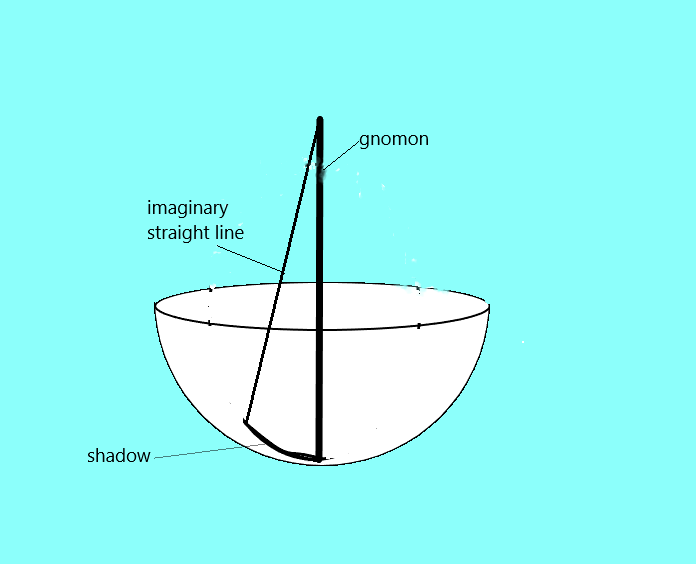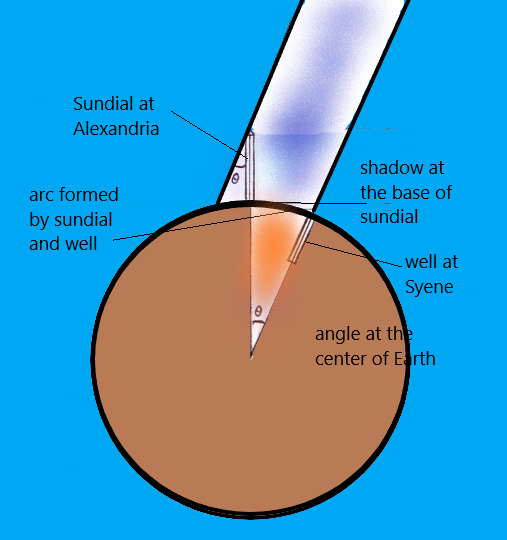The Ingenious Measurement of Earth's Circumference: A Historical Insight
Written on
Chapter 1: A Testament to Human Ingenuity
Throughout history, humanity has witnessed extraordinary bursts of creativity that have transformed our understanding of the universe. While many recognize figures like Copernicus, Kepler, Galileo, Newton, and Einstein, there are lesser-known innovators whose contributions have been equally impactful. Archimedes’ famous "Eureka" moment, Galileo’s investigations into falling bodies, and groundbreaking experiments like the Michael-Morley experiment and Wu's studies on nuclear particle spins are all testaments to human brilliance. To appreciate these accomplishments fully, it's crucial to analyze the context in which they emerged. Among these historical milestones, one measurement stands out for its exceptional brilliance.
Flat Earth vs. Spherical Earth: The Debate
Pythagoras, in the 6th century BC, was among the first to suggest that the Earth was spherical, rooted in the principles of geometric beauty. However, it wasn't until the 3rd century BC that Aristotle offered compelling evidence against the flat Earth model. He noted that ships gradually disappeared from view over the horizon, indicating a curved surface, and observed that different stars were visible when traveling north or south. Aristotle also discussed lunar eclipses, wherein the Earth cast a circular shadow on the moon. Although some ancient cartographers, like Eudoxus of Cnidus, attempted to measure Earth’s circumference, their methods lacked convincing accuracy.
The Breakthrough: Measuring Earth's Circumference
Eratosthenes of Cyrene, a 3rd-century BC contemporary of Archimedes and the director of the Library at Alexandria, made a groundbreaking contribution to this scientific discourse. Often underestimated by his peers—referred to as 'Pentathlos' and 'Beta' due to his diverse interests—his brilliance shone through in his method of calculating the Earth’s circumference. Although his original writings have been lost to history, later scholars, including Cleomedes, have documented his methods and findings.
Eratosthenes understood that during the summer solstice, the sun was directly overhead in Syene (modern-day Aswan, Egypt) and did not cast a shadow at noon. He inferred that Alexandria, situated north of Syene, would produce a shadow at the same time. By measuring the angle of this shadow, he established the relationship between the two cities.

Using a sundial with a hemispherical bowl, Eratosthenes measured the angle of the shadow cast in Alexandria to be 1/50 of a full circle. This angle corresponded to the fraction of Earth's circumference, enabling him to deduce that the distance between the two cities could be multiplied by fifty to estimate the total circumference of the Earth.

Eratosthenes calculated that there were 5000 stades between Syene and Alexandria, arriving at a circumference of approximately 252,000 stades, showcasing his innovative approach to scientific inquiry.
Eratosthenes: The Pioneer of Theoretical Science?
Some historians believe that Eratosthenes employed bematists, early surveyors, to measure the distance between the two cities, though this remains speculative. Others suggest he utilized the library's resources or ancient maps. Regardless of his methods, it's clear that Eratosthenes synthesized theoretical knowledge with practical measurement to derive his conclusions.
His approach reflects a combination of theoretical reasoning and empirical observation, akin to the methods employed by later scientists like Einstein.
The Accuracy of His Method
Discussions about the accuracy of Eratosthenes’ estimate often hinge on the definition of the stade, leading to variances in the precision of his calculations. By taking modern approximations of the distance between Syene and Alexandria, one can compare his results to current measurements of Earth's circumference, which stands at approximately 40,075 km.
Eratosthenes’ method, while simple, remains a powerful example of scientific ingenuity. Even though other methods predated his, they failed to produce reliable estimates. His technique, rooted in imagination and basic tools, has endured as a remarkable achievement in the annals of science.
This video, "A Defense of the Imperial Measurement System," delves into the historical context and implications of different measurement systems, including those used by Eratosthenes.
"The Fascinating Story of One of the Most Elegant and Powerful Experiments in the History of Science" explores the groundbreaking work of Eratosthenes and its significance in the evolution of scientific thought.
Chapter 2: Conclusion - The Lasting Legacy of Eratosthenes
Eratosthenes’ contributions have stood the test of time, influencing navigators and scholars for over two millennia. His methods, though simple, demonstrated a profound understanding of geometry and astronomy. As Carl Sagan noted, Eratosthenes’ insights reshaped our perception of the world, proving it to be circumnavigable and setting the stage for future explorations.